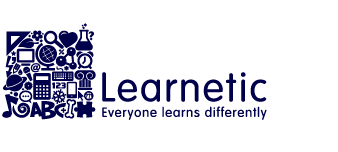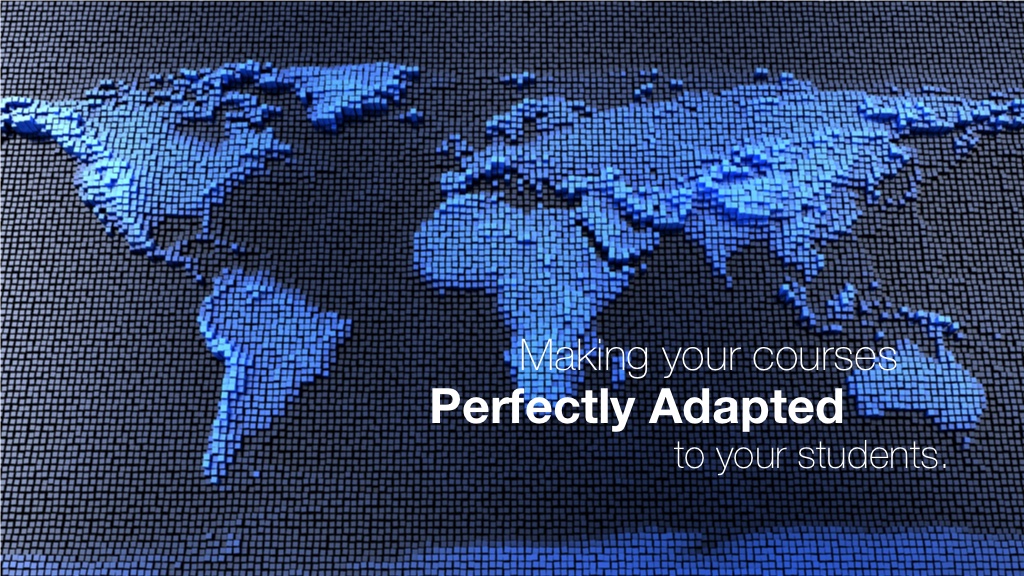LMS that will make your courses
perfectly adapted to your students. Adaptive LMS.
Author: Karolina Grochola, Senior Product Manager at Learnetic SA
Learning adaptivity is a key benefit of all kinds of technology supported learning methods based on digital content, and brings an undisputed advantage over traditional print learning materials. The ability to modify the presentation of particular parts of a course in response to a student’s performance enhances the learning results and makes the most of student’s capabilities of understanding a particular topic. However, this unabated object of discussions is hardly ever put into practice. At Learnetic we’ve made two essential steps to achieve its true implementation. First, we have created our mAuthor tool so that it could allow designing lessons that adapt to the student’s progress at the level of a sequence of available Learning Objects. Now, we introduce adaptive learning paths amongst the lessons included in a course deployed on our mCourser eLearning platform.
.
Adaptive LMS through learning paths
From now on, the courses published on mCourser can be re-designed into truly adaptive content. mCourser is capable of recording various data on users’ interactions and fully exploiting this data to define advanced adaptive paths across the course. Students’ results are not the only parameters that can be used to build adaptive algorithms. mCourser’s adaptive engine can take into account a variety of other data like a number of attempts, mistakes, errors or time spent by a student with a particular activity. Every publisher who offers his or her content on mCourser platform can build advanced adaptive mechanisms using mCourser’s new Adaptive Learning Course Editor.
Let’s take a look at the below example of new mCourser capabilities in which the adaptivity algorithm is applied to Learnetic’s mCurriculum course. At first, the only lesson concerning a particular topic that a student can see is a Pre-Assessment Test aiming to provide information on the current level of his or her knowledge. The result of this test determines the next step, which is either displaying one of the available Remedial Lessons or moving the student to the Main Topic Lesson. The goal here is to make sure that the student has achieved the required level of knowledge necessary to understand the material introduced in the Main Topic Lesson. The lesson itself is also displayed as an adaptive sequence of Learning Objects in accordance with an algorithm designed in mAuthor at the stage of lesson creation. The algorithm provides Learning Objects in a sequence adjusted to the student’s progress (e.g., moving the student to additional extension or remedial activities if necessary). When the Main Topic lesson is finished, depending on the results, the student may be forwarded directly to the Next Topic or can be given a particular set of either Enhancement Activities or Remedial / Drill & Practice Activities. Finishing them also moves the student to the Next Topic. Now, this circle can repeat for the next part of the material.
Such juggling with the pre-created lessons of a course can be designed in the new mCourser’s Adaptive Learning Course Editor.
.
Fine-tuning the progress reporting of adaptive lessons
How to measure and find a common denominator for student’s results if each student has been working with a different set of Learning Objects? We’ve taken care of that!
A student sees a set of Learning Objects displayed on a single screen. A lesson contains various screens that have the ‘reportable’ and ‘unreportable’ status, and only the ‘reportable’ ones provide substantial input to the student’s results. When the student moves from one screen to another in accordance with the lesson’s adaptive algorithm, a particular screen status is adjusted so that only the displayed ones could be made reportable. Thanks to this mechanism, the results report concerns only those screens that actually have been included in the student’s learning path. Moreover, the student’s results are calculated each time in reference to a different point pool adjusted to what has been displayed during the lesson course.
This provides teachers with a more objective picture of student’s results. They can see the progress in achieving a required level of knowledge regardless of a number of screens that led there.
Do not miss other interesting posts that we will publish in this blog.






